Andesina, Temple of Apollo Grannus
Andesina: town of the Gallic Leuci, major sanctuary of Apollo Grannus, modern Grand.
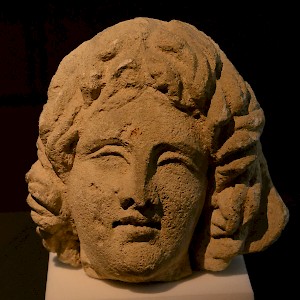
As indicated in the general page on Andesina, the town was one of the main cult centers of Grannus, a Gallic healing deity associated with sources and wells. The Romans identified him with their Apollo. A comparatively late source, the Panegyricus of 310, praises Andesina as "the world's most beautiful temple".note Several inscriptions appear to document the cult of Apollo Grannus, but it must be stressed that the most famous does not mention the god at all. We will return to it below.
We must not imagine the sanctuary as just a building. The cultic center was a sacred pool, fed by waters that later disappeared into faults of the limestone platform. Several underground water conduits have been identified. The southern ones, which were natural, brought hard, karstian waters to the center of Andesina; the northern and western ones, which were man-made, brought soft water.
At the moment, the site of the pool is occupied by the church of Sainte-Libaire. The shrine itself must have been a bit more to the southwest, at a place called Jardin Huguet, in the direction of what is called a basilica. To the east of the pool (in the direction of the amphitheater) was a monumental entrance (propylaea), which would later be included in the city wall of Andesina. Between this gate and the amphitheater was a bathhouse that was connected with the sacred pool with a water conduit.
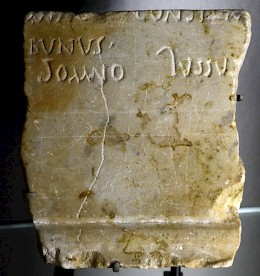
In the southeast, there was another bathhouse, while a third bathhouse has been postulated in the northwest. The complex as a whole was surrounded by the "voie close", a circular road with a diameter of 888 meters (3000 Roman feet) that still indicates the border of modern Grand.
Just north of the pool, an inscription was discovered that mentions that a tribune, ordered to do so in a dream (somno iussus), had left this inscription. This dedication has been used as evidence that the cult of Apollo Grannus knew incubation rituals, meaning that those in need of a cure slept in the sanctuary and believed that their dreams gave them instructions for the correct cure. However, there is no evidence whatsoever that there was incubation involved in the cult of Apollo; it is better known from the cult of Asclepius. More importantly, the name of the deity is not preserved in the inscription. It might as well be a pilgrim's dedication to, say, Dionysus.
It must be added that there is more room for doubt. While the existence of a pool, bathhouses, monumental architecture, and the cult of Grannus have been proven, many pieces of evidence have been interpreted too easily as "grannian". However, an inscription with the letters anno can be supplemented to read Granno ("to Grannus") or annorum ("of the years"). We just don't know. The fact that the decoration in both the basilica and the Jardin Huguet is dionysiac in nature, should give us a pause for thought.
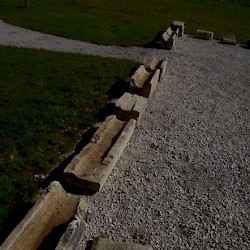 Andesina, Baths of the amphitheater, Water conduit |
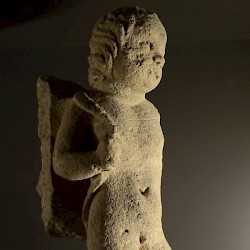 Andesina, Jardin Huguet, Amor |
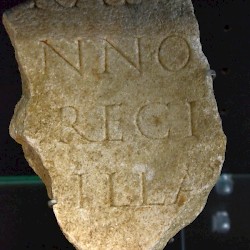 Andesina, Inscription with possibly the word Granno ("to Grannus") |
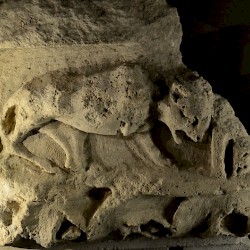 Andesina, Jardin Huguet, Relief of a panther |